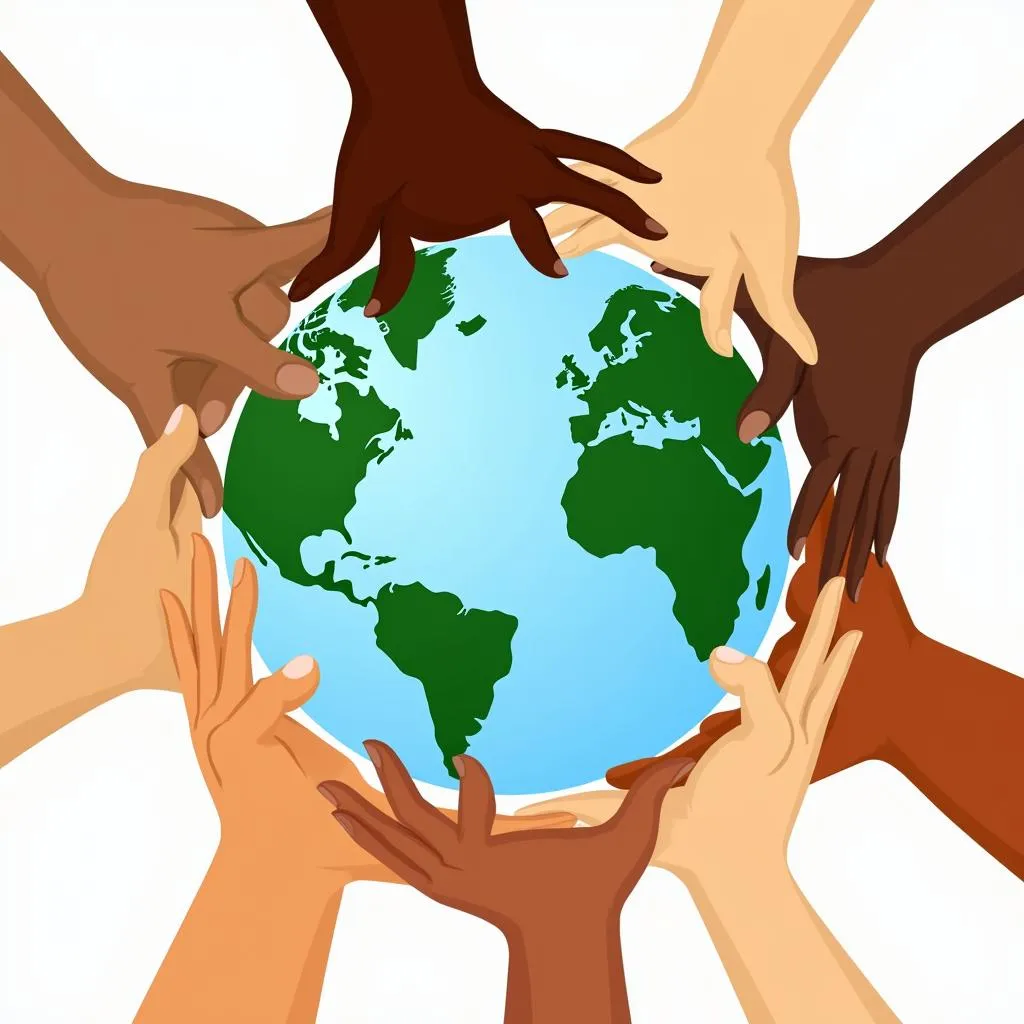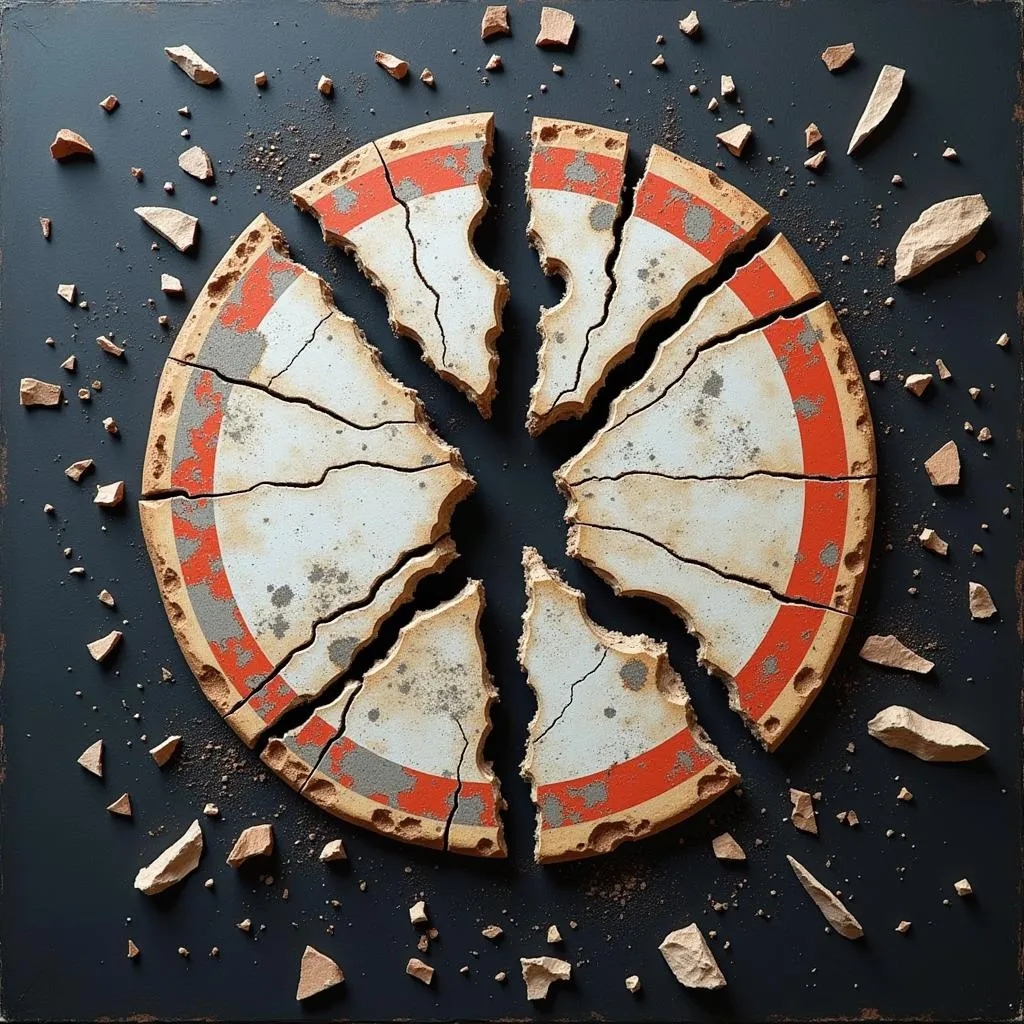Symbols are the universal language of humanity. They transcend borders, languages, and cultural differences, communicating complex ideas, beliefs, and values in a way that words often cannot. From ancient cave paintings to modern-day logos, symbols have played a pivotal role in shaping our understanding of the world and our place within it. This article delves into the profound influence of symbols on society, exploring how they foster unity, ignite conflict, and shape our collective identity.
Symbols as Unifying Forces: Bridging Divides and Inspiring Hope
 Diverse hands forming a circle around a globe symbol
Diverse hands forming a circle around a globe symbol
At their core, symbols possess an inherent ability to unite. A shared symbol can evoke a sense of belonging, reminding individuals that they are part of something larger than themselves. National flags, for instance, serve as powerful emblems of patriotism and national identity, rallying citizens together under a common banner. Religious symbols, such as the Christian cross or the Islamic crescent moon, hold deep spiritual significance for millions worldwide, fostering a sense of community and shared faith.
Beyond their ability to unite nations and religious groups, symbols can also transcend cultural barriers, serving as a bridge between different communities. The Olympic rings, for example, represent the international spirit of the Games, uniting athletes and spectators from all corners of the globe in a celebration of sportsmanship and human achievement. The peace sign, with its simple yet profound message, has become a universally recognized symbol of hope and non-violence, resonating with individuals from diverse backgrounds who share a common aspiration for a more peaceful world.
The Double-Edged Sword: When Symbols Ignite Conflict and Division
 A cracked symbol representing a divided society.
A cracked symbol representing a divided society.
While symbols have the power to unite, they can also be used to divide and incite conflict. History is replete with examples of symbols being appropriated for political agendas, fueling hatred, and sparking violence. The swastika, once a benign symbol of good luck, became irrevocably associated with the horrors of Nazi Germany. Similarly, the Confederate flag, originally flown by the Confederate States of America during the American Civil War, remains a contentious symbol today, often viewed as a symbol of racism and oppression.
The power of symbols lies in their ability to evoke strong emotions and deeply held beliefs. When these symbols are manipulated or misinterpreted, they can be used to justify acts of violence and discrimination. It’s crucial to remember that symbols are not inherently good or evil; it is the meaning we ascribe to them that determines their impact on society.
Shaping Identity: How Symbols Define Who We Are and What We Believe
 A tapestry of diverse cultural symbols representing global heritage.
A tapestry of diverse cultural symbols representing global heritage.
Symbols play a fundamental role in shaping our individual and collective identities. They serve as visual representations of our values, beliefs, and aspirations, communicating who we are to the world and reinforcing our sense of self.
Cultural symbols, such as traditional clothing, music, and art forms, are passed down through generations, preserving cultural heritage and connecting individuals to their roots. These symbols serve as tangible reminders of our shared history and traditions, fostering a sense of belonging and continuity within a community.
Moreover, personal symbols, such as tattoos, jewelry, or even the way we dress, allow individuals to express their unique personalities and beliefs. These symbols can represent our passions, values, or experiences, serving as visual markers of our journeys through life.
Conclusion: Embracing the Power and Responsibility of Symbols
Symbols are integral to the fabric of human society. They have the power to unite and divide, to inspire hope and ignite conflict, and to shape our individual and collective identities.
As we navigate an increasingly complex and interconnected world, it is essential to be mindful of the power of symbols. We must strive to use them responsibly, promoting understanding, empathy, and respect for all. By embracing the positive potential of symbols, we can harness their power to build bridges, foster unity, and create a more peaceful and just world for generations to come.
No Responses